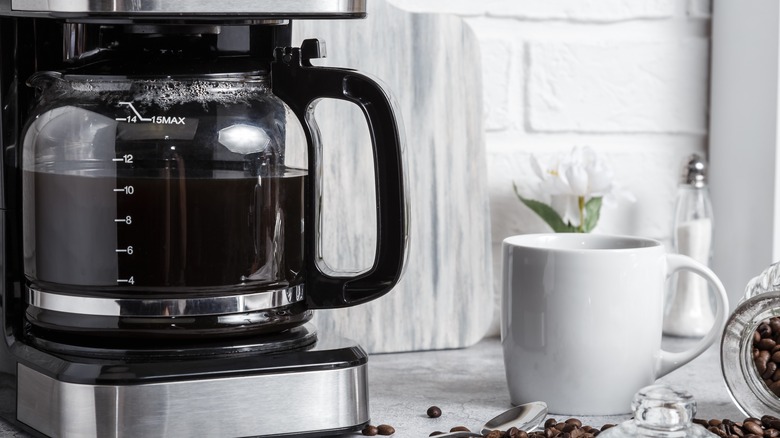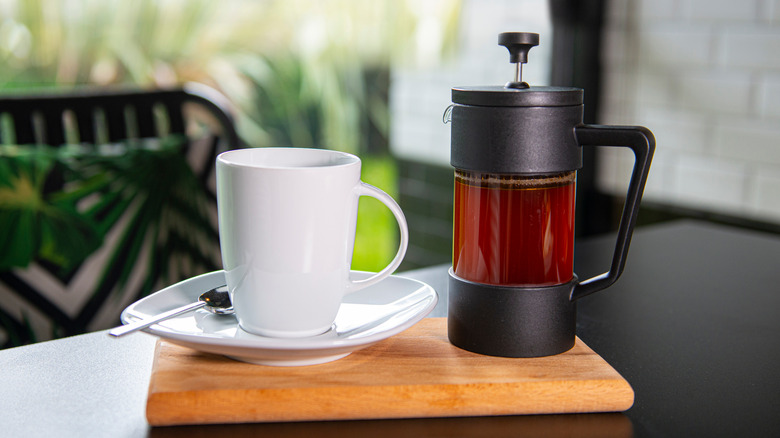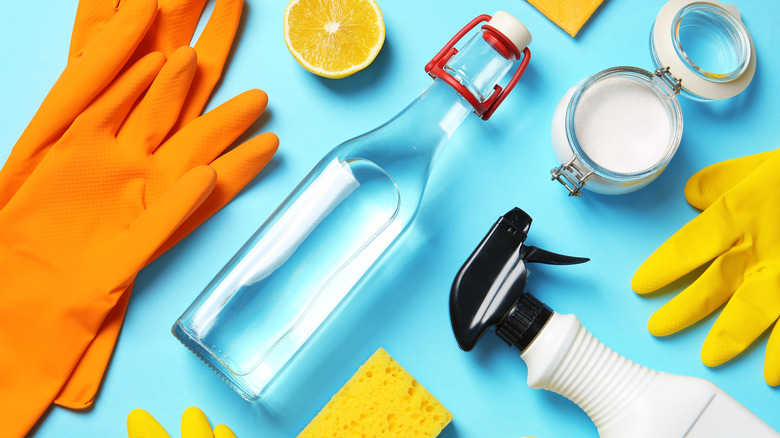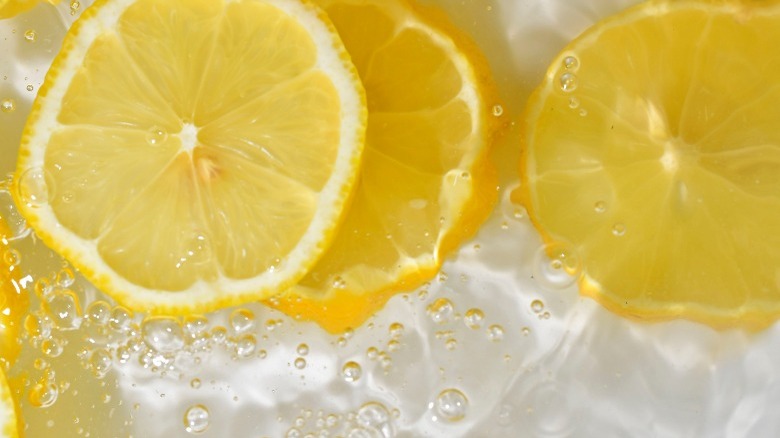The Coffee Pot Cleaning Tricks You Should Be Using Yourself
The next time you are savoring your morning cup of coffee, think twice. If you are in the office, the break room has more germs than anywhere else, the coffee pot is bacteria-ridden, and your home coffee maker is likely just as questionable. Whether your machine is a drip-style, a French press, a pod-type, or an espresso maker, cleaning it adequately is essential for its performance and your personal health.
Since a coffee maker has both warmth and moisture, it can be a hotbed of bacteria, yeast, and mold, confirms a University of Valencia study reported in Quartz. Microbiologists uncovered 67 different bacteria strains alive and well in office coffee machines, including staphylococcus and E. coli. While caffeine has anti-bacterial properties, unfortunately, the most prevalent organism found by the scientists was pseudomonas, a pathogen capable of breaking down caffeine. The National Sanitation Foundation declared the coffee maker to be the kitchen's fifth-most germ-filled item, with the appliance's handle being the worst offender, warns The Atlanta Journal-Constitution.
A dedicated and thorough cleaning regimen will significantly reduce the dangers posed by germs and mold. Daily attention along with a deep cleaning every month or two is the goal. A clean coffee pot will be beneficial to your health, will perform better, will last longer, and ultimately, your coffee will taste better.
Tips for daily cleaning
There are some telltale indications your single-serve coffee maker needs to be cleaned, states HGTV. Is less coffee than usual being produced, does it take longer to brew? Is there abundant steam? Coffee grounds in the cup or a hint of mold in the air are bad signs. There may also be obvious mineral residue. Note: A machine's manual may dictate specific cleaning guidelines that should be followed.
For daily cleaning, all it takes is mild dish soap (perhaps with an added kick from baking soda). Unplug the machine and place any removable parts in warm, soapy water. Avoid scrubbing with anything abrasive. A brush or rubber utensils may be needed to remove grounds from a French press's carafe. Fill the carafe to 3/4 level with warm soapy water, plunge several times, empty, and rinse, suggests Home Depot. If a coffee maker's parts are dishwasher-safe, you can go that route to clean and sanitize. To prevent clogging, don't drop used grounds down the drain, or use a fine sieve. Alternatively, you can reserve them for composting. Don't overlook the lid when cleaning, and it is also a good idea to leave the lid up when not in use. For pod machines, clean the needle and the drip tray, which is also germ central.
Tips for deep cleaning
The ubiquitous cleaning solution of white vinegar and water will fight mineral buildup and dissolve excess coffee bean oil. Though not considered a true disinfectant by health authorities, vinegar's acetic acid will also battle the bacteria. Cleaning your machine with this solution on a regular basis (after every 40 uses or so) is highly beneficial.
To deep clean a drip device, fill the tank with a vinegar solution, brew halfway, and then turn it off. Allow the mixture to stew for up to 45 minutes, then resume brewing. Replace with water and repeat this brewing cycle twice. To ensure no vinegar has been left behind, Home Depot suggests this tip: Take one cup of the rinse water and add a teaspoon of baking soda into it. It will fizz if vinegar is still present.
According to Consumer Reports, a badly stained carafe can be remedied by a 2 to 1 mix of hot water and baking soda. Allow it to soak in the carafe overnight. Baking soda can also be used to eliminate burnt-on stains from the hot plate. To fully clean a French press, you will need to take the plunger apart to reach all the components. Soak disks and screens in warm water and dish soap, then air dry before reassembling.
A cleaner pot and a healthier you
Using filtered water when brewing will help to reduce mineral buildup known as scale. Here's where lemon juice comes in. Used full-strength or slightly diluted, it is a mellower but still acidic alternative to vinegar, per Cleanzen. Strain first to remove pulp and use in a similar fashion as vinegar to remove mineral deposits from glassware. Alternatively, salt added to water or crushed ice is also a less caustic method to treat spots, stains, and grease from carafes or glass pots. Diluted borax, hydrogen peroxide, or alcohol are all suitable cleaning agents that you could also consider.
You don't want to be drinking the calcium, magnesium, and sodium left behind by hard water. Some manufacturers sell their own de-mineralizers. For the DIYer, the borax works well as a de-scaler. Housewife How-To's recommends two unconventional methods to deal with stubborn stains at the bottom of your pot. Cover the area with coarse salt and rub vigorously with half a lemon. You can even fill the pot with boiling water, drop a detergent tablet in, and be amazed by the results. Just be sure to rinse thoroughly, of course.



